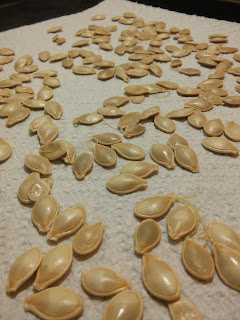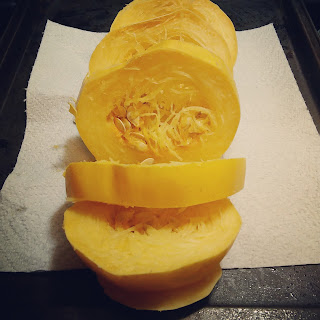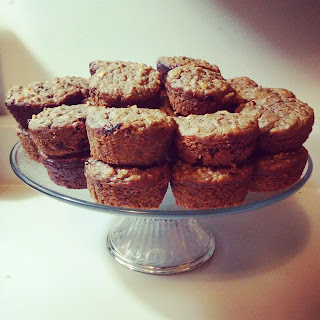 |
| Pozole Rojo |
My brother and I can't remember a time when we didn't have hominy at least once a week. It was a staple in our vegetarian house and was among the few dishes our mom cooked well. The few dishes she makes regularly are excellent and well-loved in our family (she just called and is making enchiladas for my cousin's birthday as I write this). BUT, I can count them on one hand, which is certainly one of the reasons my brother and I became the cooks we are today.
This is my cabinet o'beans that I'm trying to work my way through because, really, who needs this many beans? Have you ever tried to make beans a major portion of your diet in the summer? You definitely have to be creative because most bean dishes I like are hot dishes and not conducive to the hot, humid days we've had recently. That's why the recent cooler weather made me jump at the chance to use the hominy that's been stowing away among the beans for who knows how long.
 |
| Cabinet O'Beans |
The more I read about traditional pozole, the different varieties depending on location, and its cannibalistic past, the more I just want to give you guys a ton of links to a bunch of weird Aztec stories and go on a tangent about all the creation stories I studied in my Native American Indian Music course in undergrad...
Typically, this stew is made from hominy and meat, most commonly pork or chicken but the base, veggie additions, and toppings vary. The hominy is what gives this dish it's unique flavor and the hominy cannot be substituted. You can use the dried or canned variety, but I prefer the canned just because I never feel like I get the dried version soft enough. This can also easily be made vegetarian by swapping out the chicken stock with veggie stock and omitting the cooked chicken or pork. And while we're on that topic, don't cook your meat with the soup because it will become very dry and tough before the soup is done. I usually marinate in a little lemon juice then just grill my chicken on the Foreman or filet+sauté in salt, pepper, and garlic, but pat dry before sautéing if you do the later.
 |
| Cooking dried, rehydrated hominy (right). |
Even among the rojo (red) varieties there are variations in what makes it red, usually dried red chiles or in my case, tomatoes. I still add fresh chiles to mine, but it all depends on what looks good in the market that week or what my friends share with me from their family's recent shipment of hatch chiles or whatever came in my CSA box (I've been making this dish a long time). Toppings I enjoy are cilantro, shredded Napa cabbage, chopped shallots (or red onion), thinly sliced radishes, lime wedges, and occasionally some sliced avocado and mildly flavored queso fresco. You can seriously dump almost any other veggie into the pot and it will be great. I've even used asparagus coins once because a friend shared an enormous amount and I just couldn't use it fast enough. I'm serious, literally anything.
Ingredients:
- 2 Tbsp olive oil or canola oil
- 2 Tbsp chopped garlic
- 1 yellow onion, coarsely but evenly chopped
- 1-3 peppers of choice, chopped (de-vein for less heat)
- 1 large can plum tomatoes, cubed or crushed (preferably San Marzano variety), including juices
- 4 cups chicken stock
- 2 cans hominy, including juices
- **or ** 2-3 cups dried, rehydrated, cooked hominy including 1-2 cups cooking water
- 1/2 tsp ground cumin
- 1/2 tsp dried oregano, crushed
- 1/4 tsp celery seeds
- 2-3 bay leaves
- 1/8 tsp red pepper flakes (optional)
- salt and pepper to taste
- cooked chicken or pork
Topping options:
- Napa cabbage, shredded
- shallots or red onion, chopped
- green onion, chopped
- radishes, thinly sliced
- limes, wedges
- cilantro, coarsely chopped
- avocado, sliced
- queso fresco, crumbled
Instructions:
- Heat oil in large stock pot on medium heat.
- Sauté garlic and onion for 3-5 minutes or until onion is slightly translucent.
- Add chopped pepper, sauté and additional 2-3 minutes or until pepper starts to become soft and release it's moisture.
- Add the tomatoes (entire contents of can) and sauté 2-3 minutes to heat tomatoes and they start to release moisture.
- Add the chicken stock and hominy.
- Turn the heat up to highest setting and bring to a boil.
- Boil 2-3 minutes and reduce heat to a simmer.
- Add the cumin, dried oregano, celery seeds, bay leaves, and red pepper flakes (optional).
- Salt and pepper to taste.
- Simmer until liquid is slightly thickened and hominy is soft, but not complete mush.
- Remove bay leaves.
- Garnish with desired toppings and serve.











